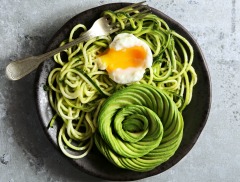Don't just meal plan... meal plan intelligently - with Meal Genius! Sign up for our free newsletter to get delicious recipes, sample meal plans and a whole lot more!
Greens, Spinach
A leafy green native of Asia, spinach was brought to Europe by the Moors when they conquered Spain in the eighth century.
With its bright green color, spinach is an excellent source of beta-carotene, plus vitamin C and folate. It's also one of the foods highest in the sight-saving nutrient duo - lutein and zeaxanthin.
Because spinach is on the Environmental Working Group's list of the most chemically contaminated foods - the Dirty Dozen - be sure to always pick organic.
Antioxidant Score (ORAC)=1,515
The Benefits
- Special diets: Autoimmune Paleo Diet, Candida Diet, Diabetic, Elimination Diet, Gluten-Free Diet, Gluten-Free/Dairy-Free Diet, Grain-Free Diet, High Protein Diet, Low Acid Diet, Low Carb Diet, Low FODMAP Diet, Low Histamine Diet, Low Starch Diet, Paleo Diet (Light), Paleo Diet (Strict), PCOS Diet, Pescetarian Diet, Primal Diet, Thyroid Diet, Vegetarian Diet, Whole Food
- Excellent Source of: VitaminA, VitaminC, VitaminK, Folate, Manganese
- Good Source of: Iron, Magnesium, Potassium, Riboflavin
- Preferences: No Fish, No Red Meat, No Pork, No Eggs, No Shellfish, No Gluten, No Nuts, No Seeds, No Soy, No Dairy, No Poultry, No Molds, No Citrus, No Coconut, No Pseudograins, No Nightshade, No Legumes, No Grains, No Corn, No Yeast, No Peanuts, Low Carbohydrate, Low Cholesterol, Low Fat, Low Sodium, Low Sugars, Low Saturated Fat
Related Foods
Related Nutrients
Selecting and Storing
Fresh spinach is available year-round. Choose leaves that are crisp and dark green with a nice fresh fragrance. Avoid those that are limp, damaged or which have yellow spots. Refrigerate in a plastic bag for up to 3 days. Spinach, which is usually very gritty, must be thoroughly rinsed.









